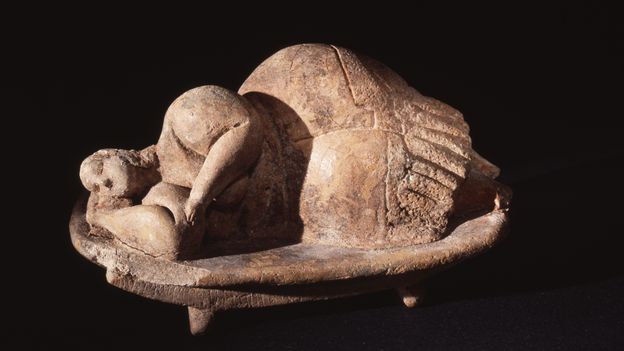
From beds for Roman newlyweds, to "hangover" benches for 19th-Century workers: the pursuit of a good night's sleep has followed us through the ages.
Amid the windswept expanse of the Bay of Skaill, on the west coast of the Scottish island of Orkney, is the ancient village of Skara Brae. This maze of fuzzy green mounds – large, single-room houses surrounded by thick walls topped with grass and connected with covered stone passageways – was abandoned some four and a half thousand years ago. But inside each residence are two objects that still look familiar to modern eyes – beds.
Like most ancient Egyptian beds made for wealthy elites, Tutankhamun's mostly consist of a wooden frame with a woven base of reeds or string. And as was customary at the time, the young king would have laid his sleepy head on a rigid, raised headrest each night rather than a soft pillow. This system was often found in hot climates , where it may have improved the circulation of air. It could also have been appealing as a way of protecting carefully coiffured hairstyles – the ancient Egyptians, including Tutankhamun's own grandmother, sometimes wore curled, braided, or plaited styles.
By the 17th Century, Europeans had a wide universe of beds to choose from. There were box beds ( Read more from BBC Future about why medieval people slept in cupboards ), beds strung with rope – which had to be tightened regularly, possibly leading to the expression "sleep tight" – and elaborate wooden four-posted beds like the Great Bed of Ware , which reportedly once slept 52 people. But one staple ingredient of early modern bedding was the "tick mattress".
These simple sacks, which sometimes reached gigantic proportions, were made of strong, tightly woven materials such as linen, known as "ticking". They could be stuffed with a wide variety of fillings, from feathers to straw. The specific packing material used could have a profound impact on the inhabitant's quality of sleep. According to the book At Day's Close: A History of Nighttime , one traveller passing through Switzerland in 1646 complained bitterly about having to spend the night in a bed stuffed with leaves, which "made such a crackling" and pricked his skin through the tick.

No comments:
Post a Comment